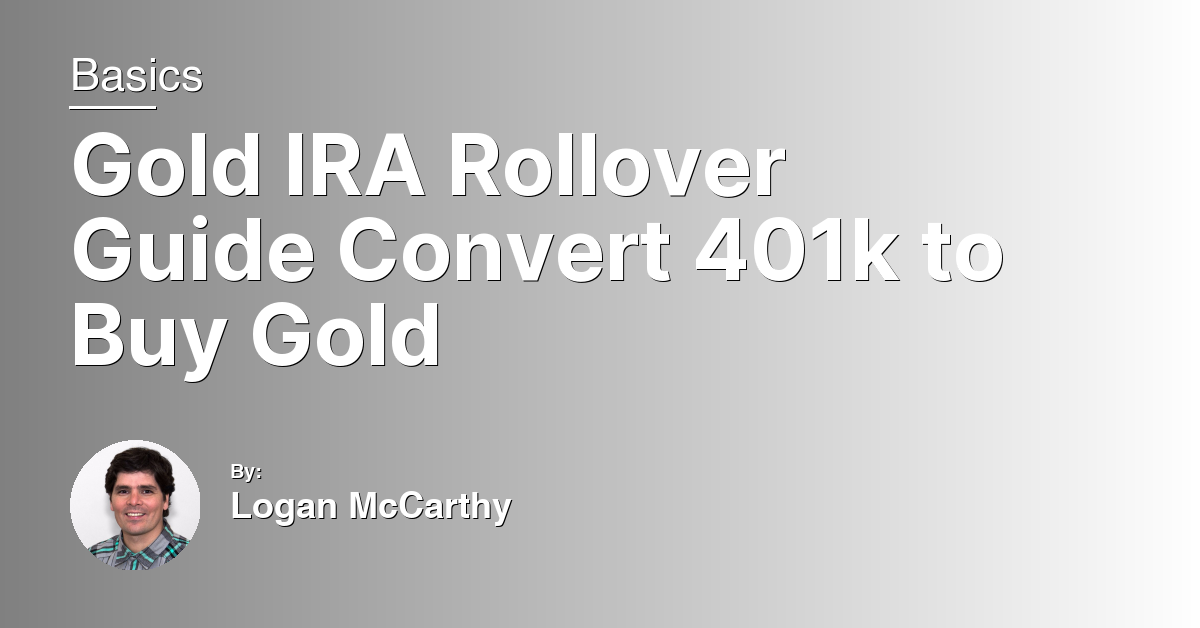In an era where financial security is paramount, diversifying your investment portfolio is not just wise—it’s essential. The “Convert Your IRA to Gold Ultimate Guide and 5-Step Transfer” serves as your compass in navigating the golden path to safeguarding your retirement savings. This comprehensive guide demystifies the process, offering invaluable insights and a straightforward, actionable plan to seamlessly transition your IRA investments into gold. Whether you’re a seasoned investor or new to the world of precious metals, this guide illuminates the journey towards a more secure financial future.
Selecting a Trustworthy Custodian
Selecting a Trustworthy Custodian is crucial for the security and compliance of your IRA conversion to gold. Ensure the custodian is IRS-approved, specializing in precious metals and offers a self-directed IRA option. This provides the flexibility to include a variety of assets, such as bullion, coins, and other precious metals like silver, platinum, and palladium in your retirement portfolio.
Research their reputation, experience, and customer service quality. A reliable custodian should have a solid track record in risk management and asset protection. Check for any history of regulatory failures or customer complaints. Fees are also an important consideration; compare them across custodians to ensure transparency and competitiveness.
Discuss with financial advisers or experts in precious metal investments to gain insights into the best custodians in the market. Their experience can guide you towards institutions known for their integrity, efficiency, and robust management practices. This step is vital for safeguarding your investment and optimizing your retirement savings strategy.
Opening a Self-Directed Account
To open a Self-Directed IRA (SDIRA) for gold investment, start by choosing a reputable financial institution or custodian that specializes in precious metals. It’s crucial to select a company with a strong reputation for customer service, security, and compliance with IRS regulations. This institution will act as the custodian of your IRA, holding the assets on your behalf and ensuring that your investments comply with tax laws.
Next, complete the application process with your chosen custodian. This will include providing personal information, setting up funding options for your account (such as a transfer from an existing IRA, 401(k), or other retirement accounts), and selecting your desired investments. For a gold IRA, this could include bullion coins, bars, or other approved precious metal products like silver, platinum, and palladium.
It’s important to discuss your investment strategy with a financial adviser to ensure it aligns with your goals for diversification, risk management, and asset allocation. Remember, investing in gold can be a way to hedge against inflation and market volatility, but it should be part of a broader diversified portfolio to mitigate risk.
Finally, review all fees associated with the SDIRA, including setup fees, annual storage and insurance fees, and any transaction fees for buying or selling assets. Understanding these costs upfront will help you manage your investment more effectively.
Initiating the Transfer of Funds
Next, consult with a financial adviser to determine the best asset allocation for your portfolio, considering diversification to mitigate risk aversion and inflation. Your adviser can help you decide between transferring a 401(k), pension, SEP-IRA, or Roth IRA into gold coins or bars, ensuring the move aligns with your investment strategy and financial goals.
You’ll then need to complete a transfer request form from the new custodian. This process involves specifying the amount of money or the percentage of your portfolio you wish to transfer. It’s crucial to understand any potential tax implications or fees associated with the transfer to avoid unexpected costs.
Finally, once the transfer is approved, your funds will be moved from your existing retirement account into your new gold IRA. This transition can take a few weeks, during which your adviser should keep you informed about the progress and any actions you might need to take.
Acquiring IRA-Qualified Precious Metals
When converting your IRA into gold, it’s essential to understand which precious metals are IRA-qualified. The Internal Revenue Service (IRS) has specific requirements for purity and form. For gold, the purity must be at least 99.5%, and for silver, platinum, and palladium, the standard is 99.9%. Acceptable forms include bullion bars and coins that meet these purity standards.
Not all precious metals are eligible. For instance, collectible coins, despite their value and rarity, do not qualify. This regulation ensures the metals within your IRA are easily valued and traded on the global market, maintaining liquidity and reducing risk.
Choosing an IRA-approved depository for storage is also mandatory. These facilities adhere to strict security and insurance standards, safeguarding your investment. When selecting precious metals or a depository, consulting with a financial expert familiar with IRA rules and precious metals investments can provide valuable guidance, ensuring your portfolio remains compliant and diversified, leveraging gold as a tool for risk aversion and long-term stability.
Secure Storage Options for Precious Metals
When converting your IRA to gold, selecting a secure storage option is crucial. For investors, storing precious metals such as gold bars and coins involves choosing between a home storage IRA or a depository.
Depositories are highly secure facilities regulated by the Internal Revenue Service (IRS) and provide an added layer of protection. These facilities often offer both segregated (separate storage for your metals) and non-segregated (commingled storage) options, ensuring that your investment is safeguarded against theft, loss, or damage.
For those considering a 401(k) rollover or diversifying their portfolio, utilizing a depository aligns with IRS regulations, avoiding potential tax penalties. Moreover, this option simplifies the management of your gold IRA by offering detailed reporting and often lower fees than home storage solutions.
Understanding the Benefits of Diversification and Protection
Diversifying your investment portfolio by including gold can provide a safety net against market volatility and inflation. As a tangible asset, gold has historically held its value over time, offering a level of protection not found in many other investment vehicles. This makes it an attractive option for those looking to safeguard their retirement savings, such as in an IRA, 401(k), or pension plan.
Including gold in your retirement account through a conversion or rollover can act as a hedge against currency devaluation and economic downturns. It’s not just about adding variety; it’s about securing a portion of your portfolio in an asset that moves inversely to paper investments like stocks and bonds. This can be particularly appealing for investors with a traditional or Roth IRA, seeking to balance their investment options and minimize risk.
Converting your IRA to gold is not only a prudent way to diversify but also offers potential tax advantages. Whether you’re investing in gold coins, bars, or gold-backed securities, understanding the regulations and fees involved is crucial. Consulting with a financial expert or institution knowledgeable in precious metals can open the door to a more resilient financial future.
Navigating Tax Considerations and Implications
When converting your IRA to gold, understanding the tax implications is crucial. This step can significantly affect your financial portfolio’s diversification, potentially safeguarding against market volatility. However, the IRS has specific rules regarding IRA conversions, especially when moving from traditional assets like bonds or stocks to physical gold or other precious metals.
Firstly, it’s essential to know that transferring assets from a 401(k) or a traditional IRA into a gold IRA could be taxable. This transaction is considered a distribution and then a purchase of gold, which might trigger a taxable event. Therefore, consulting with a tax advisor is a wise step to ensure compliance and optimize tax benefits.
Secondly, be aware of the types of gold investments allowed in an IRA. The IRS permits certain coins and gold bars, but they must meet purity and fineness standards. Purchasing gold that does not meet these criteria could result in a disallowed investment, attracting penalties.
Lastly, consider the fees involved. Transferring your IRA to gold involves custodian fees, storage fees (if opting for physical gold stored in a bank vault or a financial institution’s secure storage), and possibly seller fees. These costs can diminish the tax benefits you might be expecting from this move. Therefore, thoroughly evaluate the price against potential tax deductions and the long-term benefits for your savings account or investment portfolio.
Evaluating Costs and Fees Involved
When converting your IRA to gold, understanding the costs and fees involved is crucial. These expenses can impact the overall value of your investment and affect your financial strategy.
First, consider the setup fees. Some companies charge a one-time fee to open your gold IRA. This can vary significantly between companies, so shop around. Additionally, there’s the cost of purchasing gold itself. Prices fluctuate based on market dynamics, so timing your purchase can influence your investment’s initial value.
Annual maintenance fees are another consideration. These cover account administration and storage of physical gold, often in a secure bank vault. The fees can differ based on the amount of gold you hold and the custodian’s pricing structure.
Lastly, be aware of potential selling fees when you decide to liquidate your investment. Depending on market conditions and the specifics of your IRA provider, these can vary.
Evaluating these costs against the benefits of diversification and the potential for a hedge against inflation is key.
F.A.Qs
Can I turn my IRA into gold?
Yes, you can turn your IRA into gold by rolling your funds over into a gold IRA. This allows you to benefit from gold investing’s advantages like portfolio diversification and protection against inflation.
Is gold good for an IRA?
Gold is a good option for an IRA as it can help protect wealth by reducing investment volatility, serving as a hedge during economic downturns, and providing potential gains in a tax-efficient manner.
How to move 401k to gold without penalty?
To move 401k to gold without penalty, you can complete a direct or indirect rollover. In a direct rollover, funds are transferred from the 401(k) to the gold IRA, while an indirect rollover involves withdrawing the funds and depositing them into the gold IRA within 60 days.
How much does it cost to have a gold IRA?
Having a gold IRA comes with various fees and costs that can vary depending on the custodian you choose and the specific services you require. It is important to carefully calculate and compare these costs before making a decision.

